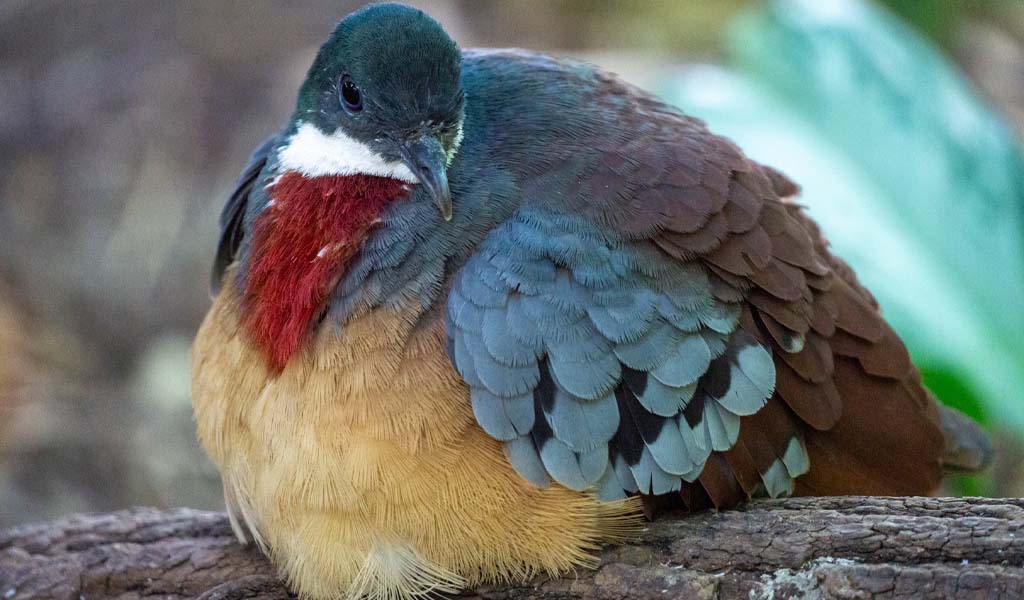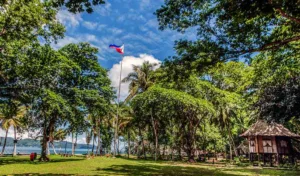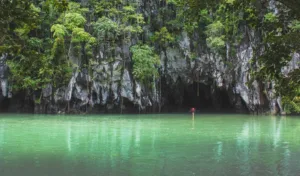Exploring the Fascinating World of the Luzon Bleeding-Heart Dove!
Welcome, bird enthusiasts and nature lovers! Today, we embark on an exhilarating journey through the verdant landscapes of the Philippines to uncover the secrets of one of its most captivating avian residents – the Luzon Bleeding-Heart Dove. Nestled amidst the lush forests of Luzon Island, this mystical bird boasts an aura of enchantment and intrigue, captivating the hearts of all who encounter it. Join us as we delve deep into the world of this unique species, discovering its habits, habitat, and the conservation efforts dedicated to its preservation.
The Origin of its Unique Name
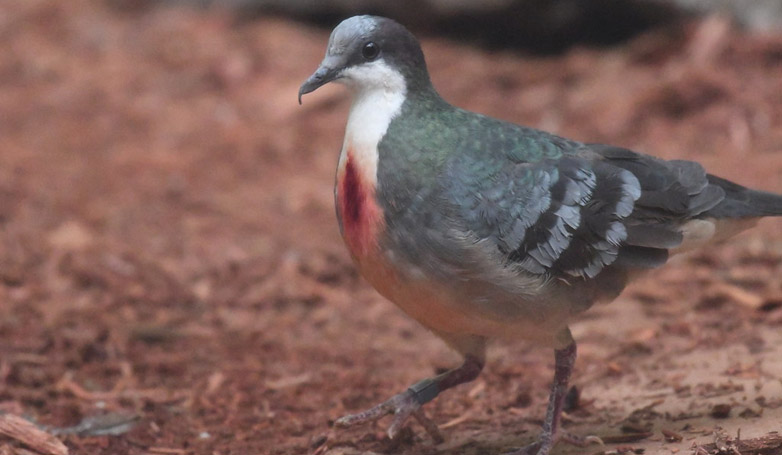
The Luzon Bleeding-Heart Dove, scientifically known as Gallicolumba luzonica, derives its evocative name from a distinctive and striking feature on its body. This bird is native to the island of Luzon in the Philippines and is renowned for the vivid red patch located on its chest, which resembles a bleeding wound. This characteristic marking is not only unique but also serves as a dramatic and recognizable trait among avian species. The name “bleeding-heart” poignantly captures this visual aspect, making the dove a subject of intrigue and fascination among bird enthusiasts and researchers alike.
Historically, the Luzon Bleeding-Heart Dove’s name has also contributed to local folklore and cultural references. The vibrant red mark, combined with the dove’s otherwise demure and gentle appearance, symbolizes a paradoxical blend of beauty and tragedy, often interpreted as a representation of love and sacrifice. This symbolism has permeated local stories and traditions, adding a layer of cultural significance to the bird’s scientific and ecological importance. Understanding the origin of its name provides insight not only into the bird’s physical characteristics but also into its cultural resonance in the regions it inhabits.
Habitat and Distribution
The Luzon Bleeding-Heart Dove is endemic to the island of Luzon in the Philippines, where it inhabits the lush, tropical forests. These doves prefer the lowland and mid-montane forests, thriving in areas with dense understories that provide ample cover and foraging opportunities. The thick foliage and abundant leaf litter of these forests create an ideal environment for the dove to search for its diet of seeds, fruits, and small invertebrates.
Unfortunately, the Luzon Bleeding-Heart Dove’s habitat is under severe threat due to deforestation and habitat fragmentation. Agricultural expansion, logging, and urban development have significantly reduced their natural habitats, pushing these doves into increasingly isolated and smaller forest patches. This habitat loss not only affects their ability to find food and shelter but also impacts their breeding and overall survival. Conservation efforts are crucial to preserving the remaining forested areas and ensuring the survival of this unique and beautiful species.
Courtship Rituals

The courtship rituals of the Luzon Bleeding-Heart Dove are a sight to behold, showcasing intricate displays of affection and bonding between mates. During the breeding season, which typically occurs from January to August, male doves engage in elaborate courtship dances to attract females.
One of the most striking behaviors is the “dance” performed by the male, where it puffs out its chest to display the vivid red “bleeding heart” patch. The male then bows deeply, cooing softly to the female as it raises and fans its tail, creating a mesmerizing visual display. This dance is often accompanied by soft calls and gentle movements, creating a romantic and captivating scene in the forest understory.
The female, upon accepting a mate, will construct a flimsy nest of twigs and leaves in the dense foliage of the forest. She will lay a single white egg, which both parents take turns incubating. The courtship rituals of the Luzon Bleeding-Heart Dove not only serve to strengthen the bond between mates but also play a crucial role in the continuation of their species, ensuring the survival of these beautiful birds in their natural habitat.
Conservation Challenges
The Luzon Bleeding-Heart Dove faces several conservation challenges that threaten its survival in the wild. One of the primary threats is habitat loss due to deforestation, as forests on the island of Luzon are cleared for agriculture, logging, and urban development. This loss of habitat reduces the dove’s available nesting sites and food sources, leading to population declines.
Another significant challenge is hunting and trapping for the illegal wildlife trade. The striking appearance of the Luzon Bleeding-Heart Dove, particularly its distinctive red chest, makes it a target for poachers and collectors. Despite legal protection, enforcement of these laws can be challenging, and illegal trade continues to pose a threat to the species.
Additionally, the Luzon Bleeding-Heart Dove is vulnerable to natural disasters such as typhoons, which can destroy habitat and disrupt breeding cycles. Climate change is also a growing concern, as it may alter the dove’s habitat and food availability.
The Importance of Conservation
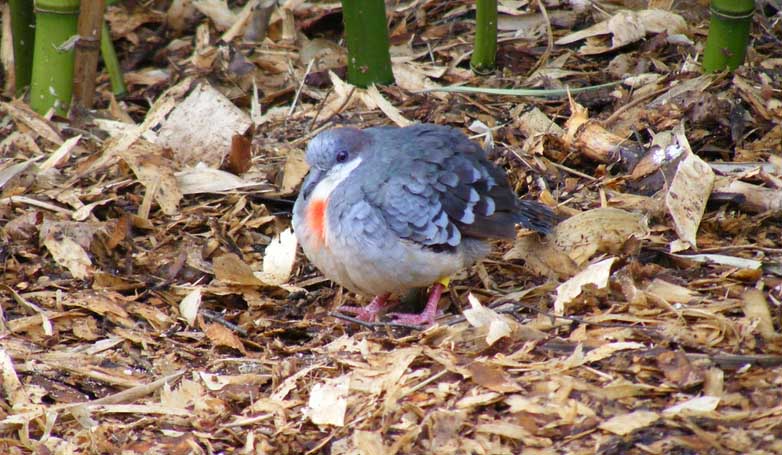
Conservation of the Luzon Bleeding-Heart Dove is crucial not only for preserving a unique and beautiful species but also for maintaining the health and balance of the ecosystems it inhabits. As an endemic species to the island of Luzon, this dove plays a vital role in seed dispersal and maintaining forest biodiversity. By feeding on fruits and seeds, the dove helps to disperse plant species, promoting forest regeneration and growth.
Furthermore, the conservation of the Luzon Bleeding-Heart Dove is indicative of broader ecosystem health. Protecting this species requires preserving its habitat, which in turn benefits numerous other plant and animal species that rely on the same forests for survival. The presence of the Luzon Bleeding-Heart Dove serves as a marker for the overall health of these ecosystems, making its conservation a priority for biodiversity conservation efforts.
Conservation efforts for the Luzon Bleeding-Heart Dove also contribute to local communities and economies. Ecotourism opportunities centered around birdwatching and nature conservation can provide sustainable livelihoods for local residents, while also raising awareness about the importance of protecting the environment.
Conclusion
As our journey comes to a close, let us bid adieu to the majestic Luzon Bleeding-Heart Dove, a symbol of resilience, beauty, and the intrinsic interconnectedness of all living beings. May its ethereal presence continue to grace the forests of Luzon for generations to come, inspiring awe and reverence in all who have the privilege of encountering its gentle gaze. Remember, the fate of this magnificent species lies in our hands – let us pledge to protect and cherish it, ensuring that it remains a beacon of hope in the tapestry of our natural world. Fly on, dear friend, and may your wings carry you to new heights of splendor and wonder.
FAQs About The Luzon Bleeding-Heart Dove
1. What does the Luzon Bleeding-Heart Dove eat?
The diet of the Luzon Bleeding-Heart Dove consists mainly of seeds, fruits, and insects found in the forest.
2. What is the scientific name of this species?
The scientific name of the Luzon Bleeding-Heart Dove is Gallicolumba luzonica.
3. What are the threats to the survival of this species?
The main threats to the Luzon Bleeding-Heart Dove are habitat loss due to deforestation and hunting for food and the pet trade.
4. What is the size and appearance of this species?
The Luzon Bleeding-Heart Dove is a medium-sized dove, measuring about 25-30 centimeters in length. It has a reddish patch on its breast.

